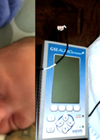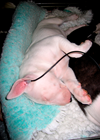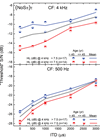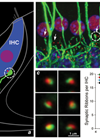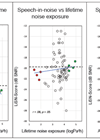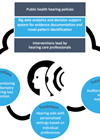Audiology features archive for 2018
Tinnitus and music
Marc Fagelson discusses how not just hearing loss, but tinnitus and hyperacusis and impairments to an individual’s ability to process music can adversely affect one’s quality of life, as well as their overall interactions from a societal and personal perspective....
Music is noise
Marshall Chasin recaps what we know acoustically about music and noise, and discusses the potentially damaging levels of music, how temporary threshold shift (TTS) is not necessarily temporary and gives us some considerations for protective devices for musicians. Most of...
Teaching the art of cooking to a hearing impaired chef
Today catering is a hugely popular career choice for many people and there’s a new cookery competition or programme on our TV screens every week. But beyond the media glamour, the kitchen is a challenging and noisy working environment, in...
Taking a fresh look at otoacoustic emissions
So what has changed in four decades of OAEs? Do we now have all the answers? Have we reached our optimum recording ability? Professor Kemp explains what we know, what we don’t know and what’s to come. In the 40...
The evolving role of OAEs in newborn hearing screening
An admission on emissions from James Hall! OAEs hold an established place in the screening of infants; Professor Hall introduces how OAEs established this position and the advances keeping the test relevant to today’s infant screening battery. Introduction Truthfully, when...
Otoacoustic emissions in the diagnostic test battery for hearing loss
So, they are great for screening, but how can otoacoustic emissions be integrated into the diagnostic test battery? Beth Prieve examines the role of diagnostic OAEs by asking three simple questions. Audiologists and otolaryngologists are familiar with otoacoustic emissions (OAEs)...
Canine hearing testing and the role of otoacoustic emission tests
Otoacoustic emissions testing is an accepted method of hearing testing in humans, but have you ever considered the situation in dogs? This article discusses deafness and hearing testing in dogs and the current role of OAE testing in this species....
Hidden hearing loss in humans
Awareness of cochlear synaptopathy (‘hidden hearing loss’) is growing. Chris Plack gives us an introduction to the condition, defining it and reviewing recent research in humans and animals with respect to noise exposure. The main cause of hearing loss is...
A binaural detection task that reveals deficits in listeners having ‘slight’ or ‘hidden’ hearing loss
The association of degraded binaural processing in adults with clinically defined ‘slight’ or ‘hidden’ high frequency hearing loss is of great interest to clinicians if it can be measured. Leslie R Bernstein and Constantine Trahiotis share their findings in measurements...
What’s hidden in hidden hearing loss?
In order to truly understand the many key aspects of acquired sensorineural hearing loss, the role of cochlear synaptopathy or ‘hidden hearing loss’ must be considered. Dan Guo and Sharon Kujawa review and summarise what we know to date, including...
Hidden hearing loss in humans: cochlear synaptopathy is superseded by cognitive effects when listening to speech in noise
Elizabeth Beach presents an overview of the recent research being undertaken at the National Acoustic Laboratories on speech in noise and its relationship to cochlear synaptopathy. Our team at the National Acoustic Laboratories (NAL) has been investigating hidden hearing loss...
EVOTION: Big data supporting public health policies for hearing loss
Big Data? Biosensors, smart hearing aids and smartphones? The EVOTION Project has it all and more! What will this project tell us about the future of hearing management? Doris-Eva Bamiou, Giorgos Dritsakis and Louisa Murdin, members of the EVOTION team,...






